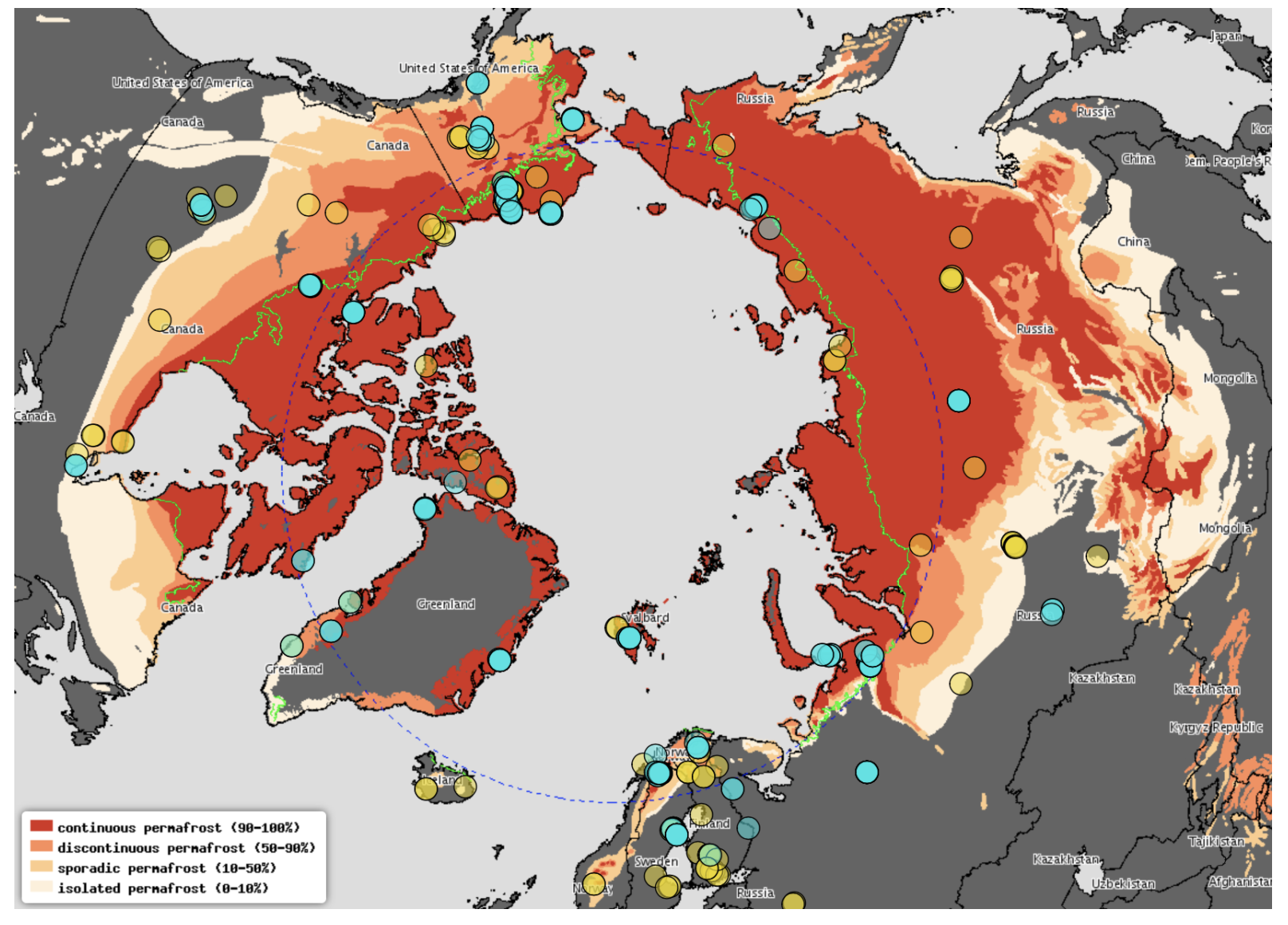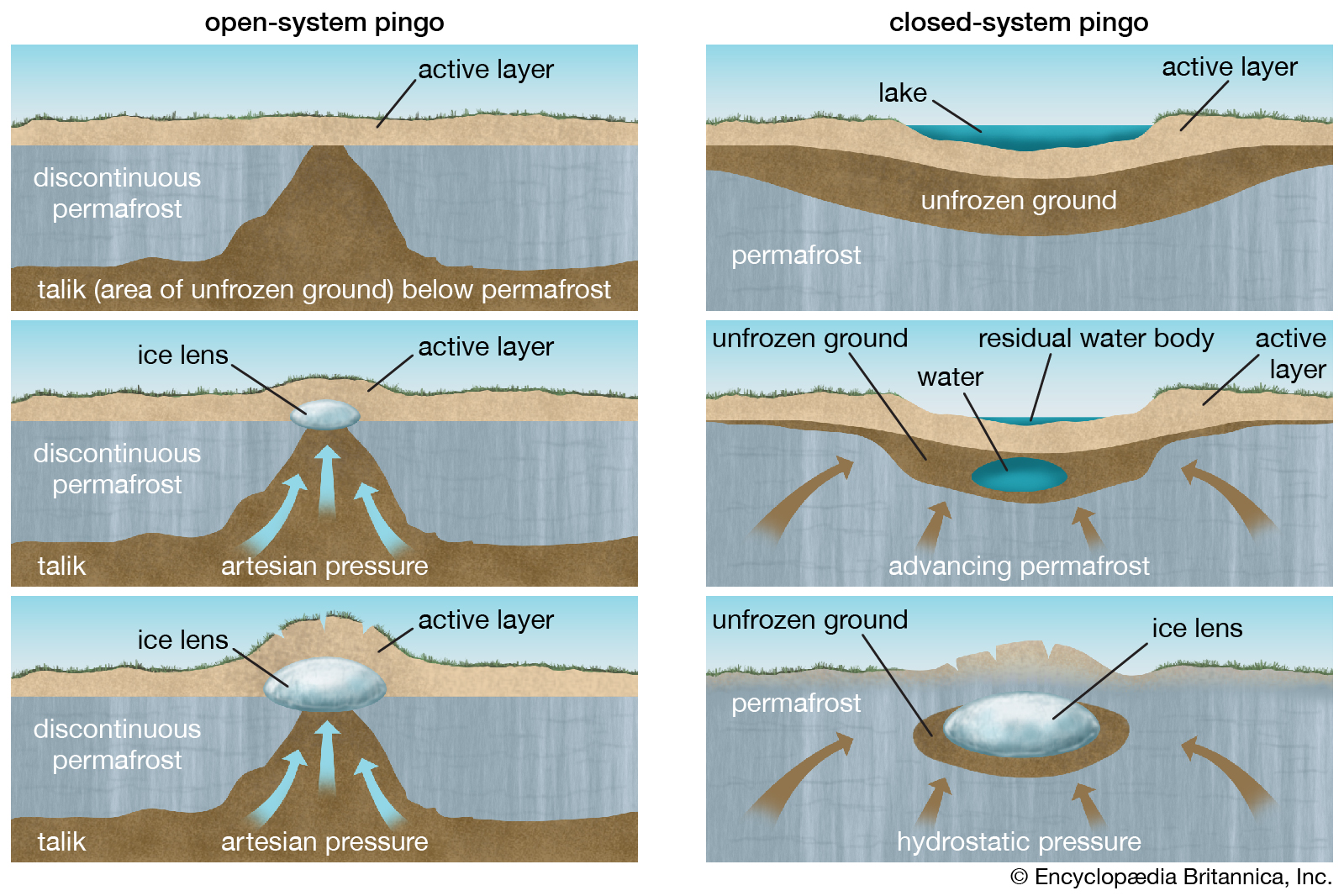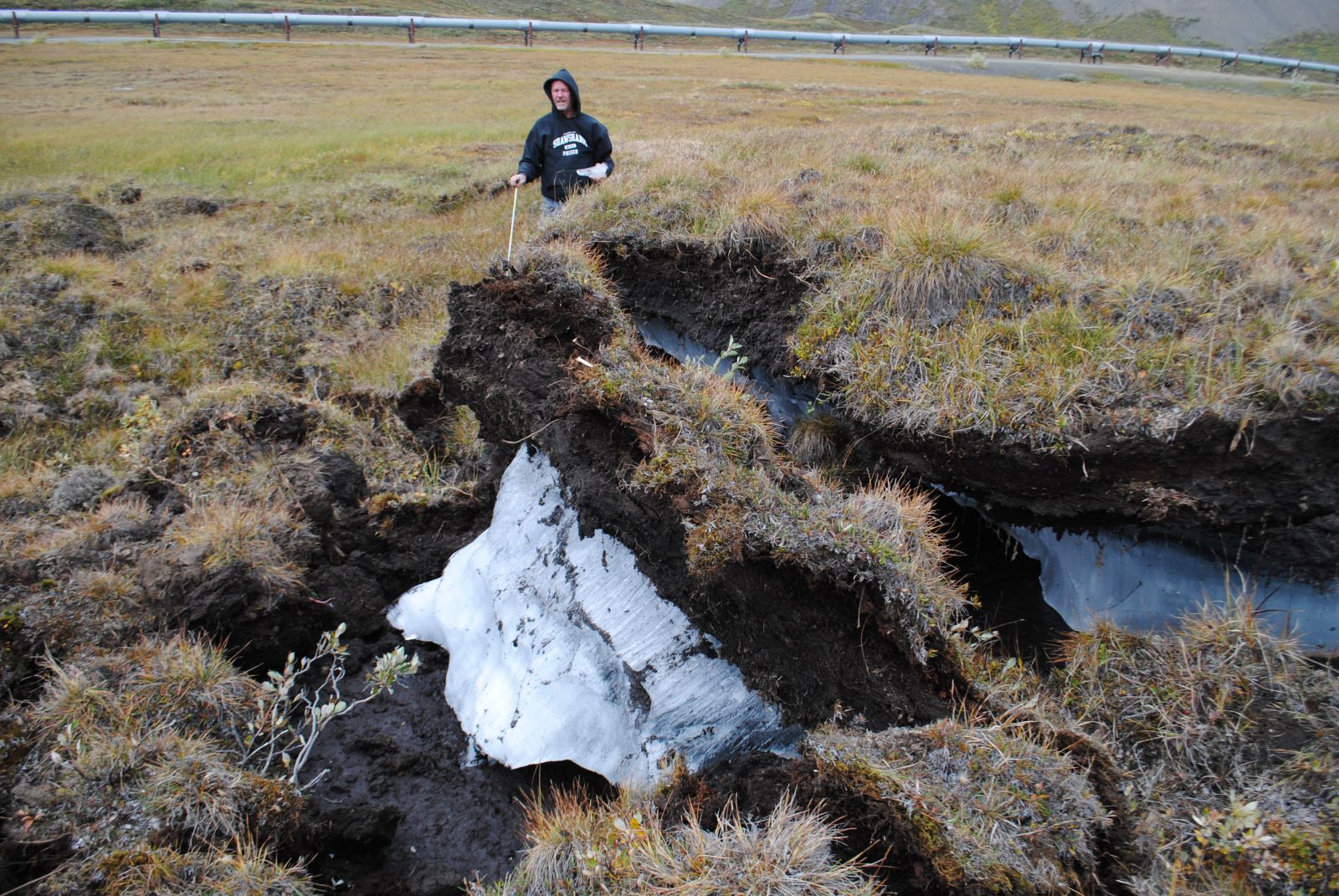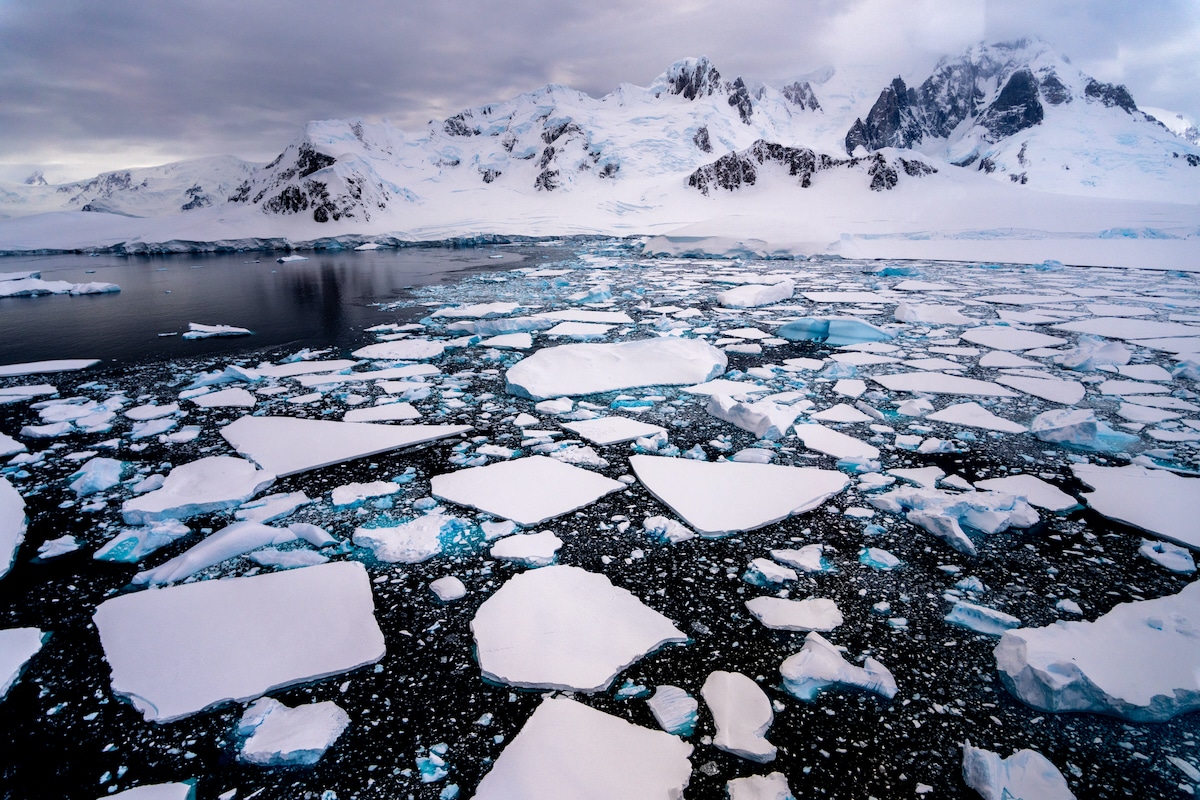4. Permafrost#
Frozen ground vs permafrost#
Seasonally frozen ground: freezes more than 15 days per year (The Ice Bowl)
Permafrost (permanently frozen ground): <= 0°C for at least 2 years (not necessary having water or ice!)
Permafrost zones#

Fig. 6 Permafrost zones and locations for CO2 and methane flux measurements collected with eddy covariance (yellow) and chambers (blue). Source: EOS#
Permafrost formation#

Fig. 7 This diagram explains the formation of open-system and closed-system pingos. — Credit: Encyclopædia Britannica. Source: NSIDC#
Factors affect permafrost#
Diurnal cycle
Seasonal cycle
Geographic location
Elevation
Landscape: snow (insulator), soil type, peat, plants (evergreen trees)
Slope
Lakes and rivers: heat source, talik
Radiation
Thawing permafrost and climate change#
Satellite observations (e.g., GRACE and ICESat)
Air temperature
Moisture
Active layer
Lakes
Ecosystem
Sea level
Biological and human activities and permafrost#

Fig. 8 NSIDC researcher Tim Schaefer stands behind an exposed ice layer at a subsidence feature, called a thermokarst, on August 19, 2012, near Toolik Lake, Alaska. Note the Alaskan pipeline in the distance. — Credit: K. Schaefer, NSIDC.#
Permafrost and carbon cycle#
Carbon dioxide
Methane
